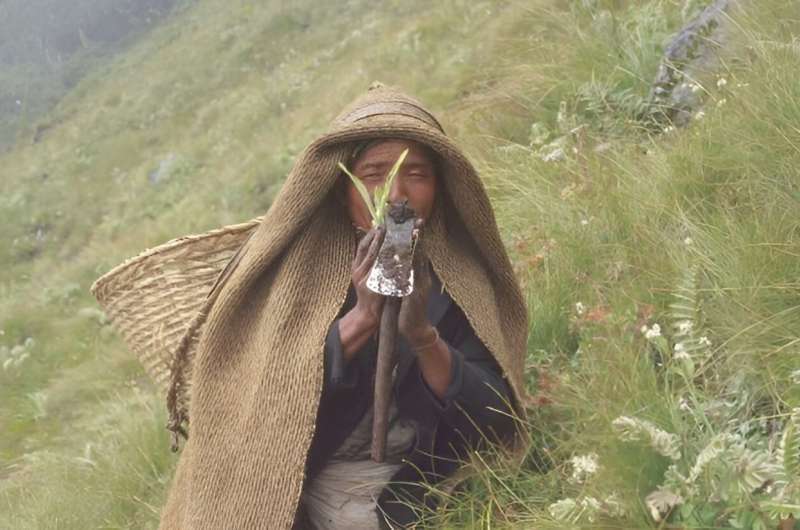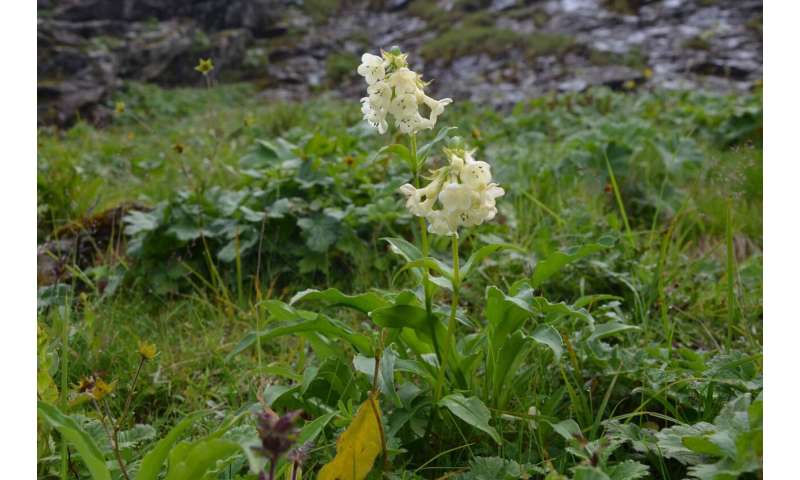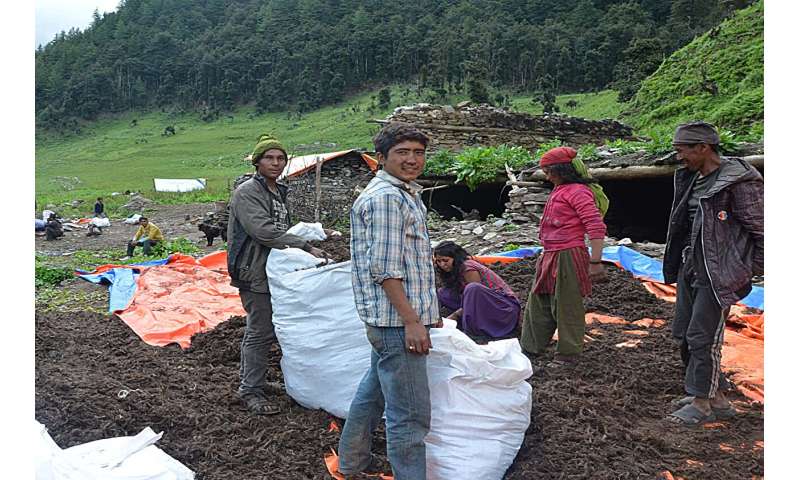This article has been reviewed according to Science X's editorial process and policies. Editors have highlighted the following attributes while ensuring the content's credibility:
fact-checked
peer-reviewed publication
proofread
Assessing the sustainability of trade in wild-harvested plants

A method for assessing the sustainability of the wild-harvested plant trade has been demonstrated using a valuable Himalayan perennial herb. Thousands of species of wild-harvested plants are bought and sold in large quantities around the world, but there is little information on sustainable harvest levels.
Carsten Smith-Hall and colleagues conducted a sustainability analysis for Nardostachys jatamansi, a plant found in the high mountains of Nepal, and prized for the intensely aromatic oil, Spikenard, distilled from its rhizomes, which is used for perfumes and medicines.
Their work has been published in PNAS Nexus.
The proposed process includes collecting basic ecological data on each species, collecting basic trade data, and integrating the ecological and trade data to estimate ecological and economic sustainability at the relevant spatial and temporal levels.
-

Credit: Dipesh Pyakurel -

Credit: Dipesh Pyakurel
For understudied plants, data collection can require significant work. In the case of N. jatamansi, data from 1997–98 suggests that trade was largely sustainable. But data from the 2014–15 harvest suggests localized over-harvesting in western Nepal, particularly in the Karnali Province.
According to the authors, encouraging a shift to more sustainable harvest practices, including cultivating-while-harvesting and management by community-based user groups, will likely be more effective in increasing sustainability than unenforced quotas or top-down bans on harvest.
More information: The sustainability of trade in wild plants—A data-integration approach tested on critically endangered Nardostachys jatamansi, PNAS Nexus (2023). DOI: 10.1093/pnasnexus/pgad328. academic.oup.com/pnasnexus/art … 93/pnasnexus/pgad328
Journal information: PNAS Nexus
Provided by PNAS Nexus





















